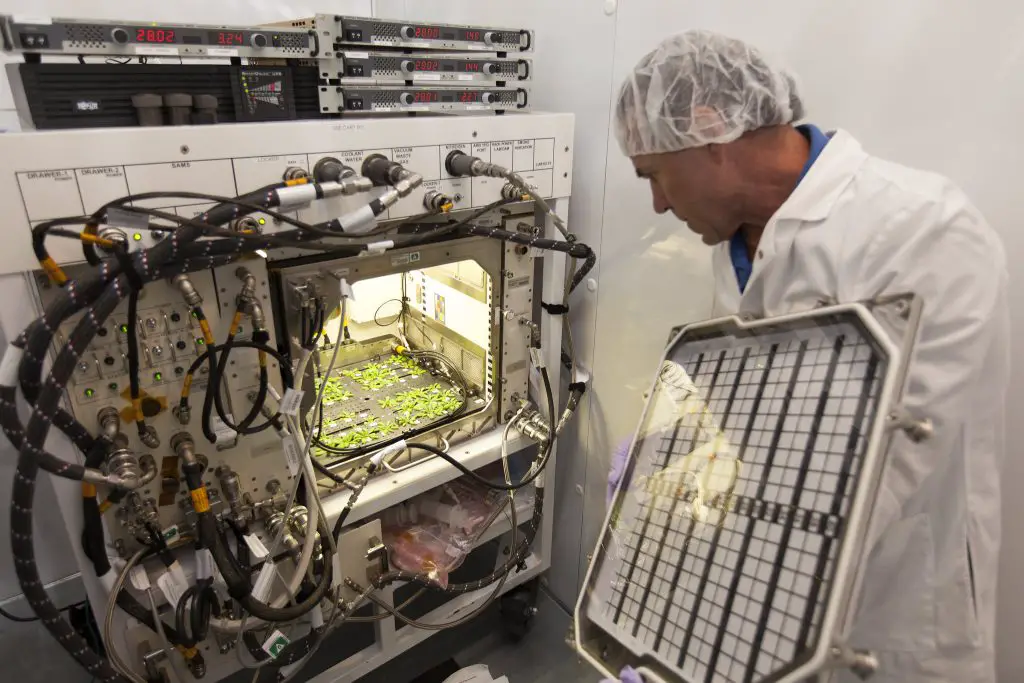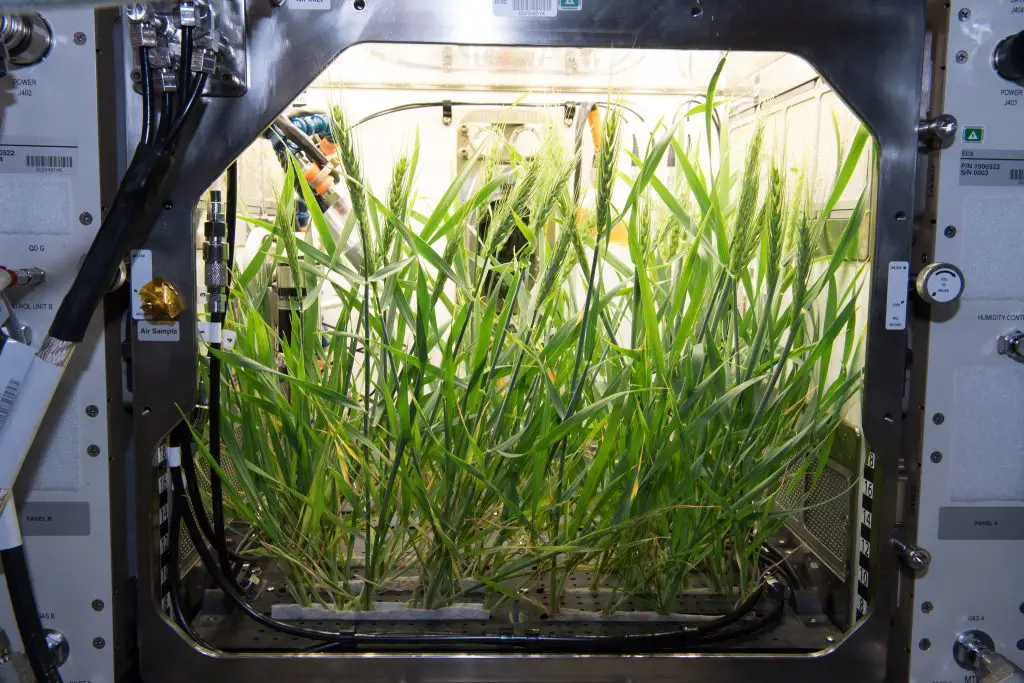The cotton gin looks like a machine with a wooden frame and metal components. The cotton gin is a machine used to separate cotton fibers from the seeds.
It consists of a wooden frame with metal parts, including a cylinder with wire teeth, also known as a gin. As the cotton is fed into the gin, the teeth grip and pull the cotton fibers away from the seeds.
The separated fibers then pass through a mesh screen, while the seeds are expelled out of the machine. The cotton gin revolutionized the cotton industry by greatly speeding up the process of separating cotton fibers from the seeds, making cotton production more efficient and profitable. Its invention by eli whitney in 1793 played a significant role in the development of the industrial revolution and the growth of the american economy.

Credit: www.britannica.com
The Invention Of The Cotton Gin
Eli Whitney And The Creation Of The Cotton Gin
Eli whitney, an american inventor, is credited with the creation of the cotton gin, a machine that revolutionized cotton production. Here are some key points about eli whitney and the invention of the cotton gin:
- Eli whitney developed the cotton gin in the late 18th century, around the year 1793.
- The cotton gin was a significant breakthrough as it greatly increased the efficiency of separating cotton fibers from their seeds.
- Prior to the invention of the cotton gin, this laborious task was done by hand, requiring a significant amount of time and effort.
- The cotton gin used a series of wire teeth to remove the cotton seeds, making the process much faster and more efficient.
Background On The Cotton Industry Prior To The Invention
To fully comprehend the significance of the cotton gin, it’s essential to understand the cotton industry’s state before its invention. Here are some key points about the cotton industry before the cotton gin:
- Cotton was one of the most important cash crops in the united states, particularly in the southern states, where the climate was favorable for its cultivation.
- However, the labor-intensive process of separating cotton fibers from the seeds hindered the industry’s growth potential.
- Slavery played a significant role in the cotton industry, with enslaved individuals being forced to do the arduous task of manually picking the seeds from the cotton fibers.
- This reliance on manual labor made cotton production slow and inefficient, limiting the ability to meet the increasing global demand for cotton.
How The Cotton Gin Revolutionized Cotton Production
The invention of the cotton gin brought about a revolution in the cotton industry. Here are some key points on how the cotton gin transformed cotton production:
- The cotton gin made it possible to process large quantities of cotton in a relatively short period, significantly increasing the industry’s productivity.
- With the cotton gin, the process of separating cotton fibers from the seeds became much faster and more efficient, reducing the labor required.
- As a result, cotton production boomed, leading to a rapid expansion of the cotton industry and increased profitability for cotton farmers.
- The increased efficiency and profitability of cotton production also contributed to the growth of the slave trade, as more enslaved individuals were needed to meet the growing demand for cotton labor.
The invention of the cotton gin by eli whitney revolutionized the cotton industry, transforming cotton production from a labor-intensive process to a more efficient and profitable endeavor. The impact of the cotton gin on the cotton industry and the historical context in which it was developed cannot be overstated.
Anatomy Of The Cotton Gin
Overview Of The Components Of The Cotton Gin
The cotton gin is a complex machine, consisting of several components that work together seamlessly to separate the cotton fibers from the seeds. Understanding the anatomy of the cotton gin is crucial in comprehending its role in the ginning process.
Here, we will delve into the key components that make up the cotton gin and explore their functions in this intricate system.
The Role Of The Hopper In The Cotton Gin
- The hopper is the initial point of entry for the cotton fibers in the ginning process.
- It acts as a container or reservoir where the raw cotton is placed before it undergoes separation.
- The hopper feeds the cotton into the rotating drum, ensuring a continuous flow of cotton fibers for processing.
The Significance Of The Rotating Drum In Separating Cotton Fibers
- The rotating drum is a pivotal component of the cotton gin, responsible for separating the cotton fibers from the seeds.
- As the cotton flows into the drum, the fibers get entangled in the teeth or spikes attached to the drum’s surface.
- With the help of the revolving motion, the drum effectively removes the cotton fibers from the seeds, allowing for further processing.
The Importance Of The Brush, Grid, And Fan In The Ginning Process
- The brush, grid, and fan work in tandem to improve the quality and efficiency of the ginning process.
- The brush helps to remove any remaining fibers from the seeds, ensuring a more thorough separation.
- The grid acts as a sieve, allowing the separated fibers to pass through while retaining the seeds and larger debris.
- The fan, with its powerful airflow, assists in the separation by blowing away the lighter fibers, ensuring only high-quality cotton remains.
By understanding the various components of the cotton gin, we can appreciate the complexity and ingenuity behind this pivotal machine. Each component plays a crucial role in efficiently separating the cotton fibers from the seeds, resulting in high-quality cotton that can be further processed and used in various industries.
Evolution Of The Cotton Gin Design
The cotton gin has a rich history of design evolution, with each iteration bringing new advancements and improvements to this critical piece of agricultural machinery. From the original design by eli whitney to modern technological advancements, the cotton gin has come a long way.
Let’s take a closer look at the evolution of the cotton gin’s design.
The Original Design Of Eli Whitney’S Cotton Gin
- Eli whitney’s cotton gin, invented in 1793, consisted of a wooden drum embedded with wire hooks, through which the cotton fibers would pass.
- The cotton fibers would be separated from the seeds as the drum rotated, thanks to the hooks catching the fibers and pulling them through narrow slots.
- The seeds, being too large to pass through the slots, would be left behind, resulting in clean cotton fibers.
Innovations And Improvements Made To The Cotton Gin Over Time
- Over the years, various innovators have made important modifications to the cotton gin’s design, with the aim of increasing efficiency and productivity.
- The addition of a crank handle in the early 19th century made it easier to rotate the drum, reducing the effort required to operate the machine.
- Interchangeable parts were introduced, allowing for easier repairs and maintenance, leading to increased durability and longevity of the cotton gin.
- Gradually, various models emerged with improved mechanisms for separating the cotton fibers from the seeds, consequently increasing processing speed and capacity.
Factors Influencing The Evolution Of The Cotton Gin’S Design
- The increasing demand for cotton production and the labor-intensive nature of separating cotton fibers from seeds were key driving forces behind the design evolution of the cotton gin.
- Farmers and gin manufacturers alike sought ways to streamline the cotton processing process, reducing manual labor requirements and improving overall efficiency.
- The availability of new materials, such as metals, also contributed to the development of more robust and durable cotton gin designs.
Modern Advancements In Cotton Gin Technology
- In recent years, the cotton gin industry has witnessed significant technological advancements, leveraging automation and digitalization to drive efficiency and productivity.
- Computer-controlled systems have been integrated into cotton gins, allowing for precise control and optimization of various processing parameters.
- Advanced imaging technologies are now used to detect and remove contaminants more effectively, resulting in higher quality cotton fibers.
- Furthermore, improved safety features have been implemented, ensuring the well-being of operators and preventing accidents.
The evolution of the cotton gin’s design has been marked by a continuous quest for increased efficiency and productivity. From eli whitney’s original design to modern advancements, this indispensable tool of the cotton industry has come a long way, revolutionizing cotton processing and shaping the course of history.
The Impact Of The Cotton Gin
The cotton gin is one of the most significant inventions in american history. Invented by eli whitney in the late 18th century, this revolutionary machine had a profound impact on the cotton industry, leading to dramatic changes in cotton production, economy, labor practices, and even the industrial revolution.
Increase In Cotton Production And Its Effects On The Economy
- The cotton gin increased cotton production exponentially by separating cotton fibers from the seeds at a rapid rate.
- As a result, the supply of raw cotton increased, leading to a surge in textile production and boosting the economy.
- Cotton became the backbone of the southern economy, with its export contributing significantly to the country’s overall wealth.
- The increased cotton production created demand for more efficient transportation systems and communication networks to support the growing industry.
Changing Demographics Of Cotton Production Regions
- The cotton gin accelerated the shift of cotton production from the coastal regions to landlocked areas such as the deep south, where cotton could be grown profitably due to the ideal climate and fertile soil.
- As a result, the population of the southern states increased rapidly, with more people migrating to these areas in search of better economic opportunities.
- The availability of vast land suitable for cotton cultivation led to the expansion of plantations, consolidating the power and influence of wealthy plantation owners in the region.
Exploitation Of Enslaved Labor In Cotton Production
- The cotton gin’s efficiency created an insatiable demand for cotton and perpetuated the institution of slavery on a massive scale.
- Enslaved african americans became the primary labor force in cotton production, subjected to harsh working conditions and inhumane treatment.
- The cotton gin worsened the conditions of enslaved individuals, as plantation owners and investors sought to maximize profits through a relentless pursuit of increased cotton output.
Influence Of The Cotton Gin On The Industrial Revolution
- The cotton gin played a pivotal role in the industrial revolution by significantly increasing cotton production and its availability for the textile industry.
- This led to a rapid expansion of the textile industry, with the manufacturing of cotton textiles becoming a dominant force in the global economy.
- The availability of affordable cotton textiles fueled the growth of mass consumption, transforming the way people dressed and forming the foundation of modern fashion trends.
The invention of the cotton gin revolutionized the cotton industry, triggering a series of far-reaching consequences. From the exponential increase in cotton production and its impact on the economy to the changing demographics of cotton production regions and the exploitative labor practices, the cotton gin reshaped history.
Moreover, its influence on the industrial revolution propelled society into a new era of manufacturing and mass consumption. The cotton gin’s legacy still resonates today, reminding us of the complex history of progress and the need to address the social and ethical implications of technological advancements.
Frequently Asked Questions For What Does The Cotton Gin Look Like
What Is A Cotton Gin And Why Was It Important?
A cotton gin is a machine used to remove seeds from cotton fibers. It was important because it greatly increased the efficiency of cotton production, making it profitable and accessible on a large scale.
When Was The Cotton Gin Invented?
The cotton gin was invented in 1793 by eli whitney, a yale graduate. His invention revolutionized the cotton industry and had a profound impact on the economy of the southern united states.
How Does A Cotton Gin Work?
A cotton gin works by using a series of rotating saws or teeth to pull the cotton fibers away from the seeds. The seeds are then separated from the fibers, making it easier to process and use the cotton for various purposes.
What Did The Cotton Gin Look Like?
The original cotton gin invented by eli whitney was a box-like machine with a hand crank. It had rotating saws or teeth inside that pulled the cotton fibers away from the seeds. Over time, variations of the cotton gin were developed, but the basic design remained similar.
How Did The Cotton Gin Impact Slavery?
The cotton gin had a significant impact on slavery. It increased the demand for cotton and led to the expansion of cotton plantations, which in turn increased the demand for slave labor. This further entrenched and expanded the institution of slavery in the united states.
Is The Cotton Gin Still Used Today?
While modern technology has advanced, the basic concept of the cotton gin is still used today. However, the machines have become much more efficient and automated, allowing for faster and more accurate processing of cotton. The cotton gin continues to play a role in the cotton industry.
Conclusion
In this blog post, we delved into the cotton gin and its visual appearance. With its invention in the late 18th century by eli whitney, the cotton gin revolutionized the process of separating cotton fibers from the seeds. Its design consists of a wooden or iron frame, a rotating cylinder with wire hooks, and a series of brushes.
Through a crank or belt system, the cylinder spins while the hooks grab the cotton fibers and pull them through narrow spaces, leaving the seeds behind. Though the exact appearance of the cotton gin may vary, the fundamental components remain the same.
It is important to note that the cotton gin played a crucial role in the expansion of the cotton industry, making cotton production more efficient and profitable. Today, while modern technology has advanced, the cotton gin’s legacy persists as a key symbol of industrial innovation and agrarian progress.



